LEIPZIG, Germany — The third-generation Porsche Panamera made its debut online, and Autoblog went to Germany to get a sneak preview of the sedan before its unveiling. While it looks a lot like the second-generation model, it benefits from a long list of mechanical, chassis, and interior changes.
Visually, the changes made to the third-generation Panamera are largely evolutionary — did you expect anything else from Porsche? While the new car looks a lot like its predecessor, it's not a simple nip-and-tuck and the firm stresses there's more going on than meets the eye.
"The basis of the chassis is the same. The wheelbase is the same. It's part of our strategy to make a chassis platform which lasts for two generations. However, we had to change a lot of things in the platform because of new requirements, such as crash-test requirements. So, it's not exactly the same platform. There are a lot of carry-over parts but there are also a lot of new parts. We wanted to increase stiffness, and we needed to [accommodate] crash requirements worldwide," Dr. Thomas Friemuth, the Panamera line's vice president, told me.
Up front, designers gave the front bumper a new look, fitted more angular headlights, and made the fenders taller. Out back, the hatch's window loses its metal frame and the light bar remains but it features an updated design. Turbo models receive the new Turbonite finish announced earlier in 2023, and center-locking wheels appear on the Panamera's list of options for the first time since its introduction in 2009.
Porsche pared down the range to two body styles: the standard Panamera and the long-wheelbase, Executive-badged variant. That's it; the Sport Turismo station wagon isn't making a comeback. Friemuth explained that global sales were much too low to justify keeping it around.
We've already seen the new Panamera's interior, which features a layout referred to as the Porsche Driver Experience. If you're familiar with recent additions to the brand's range, like the new Cayenne, you'll feel right at home in the third-generation Panamera. From the driver's seat, you face a 12.6-inch curved instrument cluster that doesn't have a binnacle. The switch to start and stop the engine has been replaced by a button (though it's still on the left side of the steering wheel), and a razor-shaped shifter clears space on the center console. Another first is the availability of an optional 10.9-inch touchscreen embedded into the part of the dashboard that's ahead of the front passenger.
At launch, buyers will have three trims called Panamera, Panamera 4, and Panamera Turbo E-Hybrid, respectively, to choose from. The first two use a 2.9-liter turbocharged V6 rated at 348 horsepower and 368 pound-feet of torque, increases of 23 and 37, respectively, over the six-cylinder found in the last-generation model. Porsche quotes a zero-to-60-mph time of 5.0 seconds for the rear-wheel-drive model and a top speed of 169 mph, while the all-wheel-drive Panamera 4 takes 4.7 seconds to reach 60 mph but loses one mile per hour at the top end.
New for 2024, the Turbo E-Hybrid model gets a gasoline-electric plug-in hybrid drivetrain that consists of an updated version of the outgoing car's 4.0-liter twin-turbocharged V8, an electric motor integrated into the eight-speed dual-clutch automatic transmission, and a 25.9-kilowatt-hour battery pack. This drivetrain is rated at 670 horsepower and 685 pound-feet of torque, and it benefits from the numerous lessons that Porsche has learned from building hybrid Panamera models for over a decade, like a new electric motor cooled by the transmission's fluid.
"With water cooling, you can only cool the housing. You cannot go directly to the components because of corrosion," Friemuth noted.
Supercar-like power unlocks supercar-like performance: the Turbo E-Hybrid takes 3.0 seconds to reach 60 mph from a standstill and doesn't stop accelerating until the digital speedometer displays 195 mph. However, the new Cayenne Turbo E-Hybrid posts an output of 729 horsepower and 700 pound-feet of torque. What gives? Granted, the Cayenne is bigger and heavier, but couldn't Porsche have dropped this exact drivetrain into the Panamera just for the hell of securing bragging rights? It turns out the answer isn't as simple as it might sound.
"The base cast-iron piece of the engine is the same [between the two models]; everything else is different. We have a different gearbox and a different electric motor. And, here we want to [continue the tradition] of making a Turbo E-Hybrid and a Turbo S E-Hybrid. The customers want both. Our strategies are slightly different depending on the customers [and on the product line]," Friemuth explained.
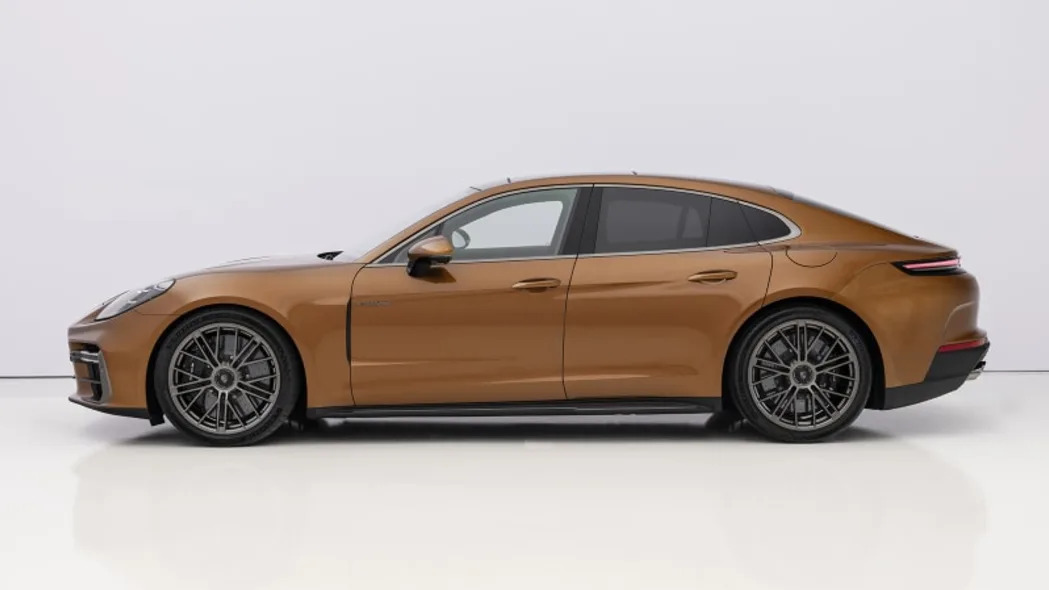

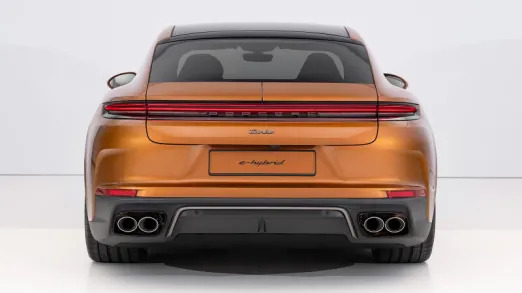
Put another way, while it doesn't sound like the Cayenne Turbo S E-Hybrid is coming back, the Panamera Turbo E-Hybrid won't stay pegged at the top of the range for very long. "In the future, we will have four hybrid models, and as you know when Porsche says there's a Turbo there typically is a Turbo S coming with more powerful and with more torque. There's much more to come," Friemuth assured me.
Every hybrid member of the third-generation Panamera range will be optionally available with a new suspension system called Porsche Active Ride. It consists of active shock absorbers powered by an electrically-operated hydraulic pump. Interestingly, the system is so powerful that Porsche claims the new Panamera doesn't need springs to deliver a comfortable ride; they're there to carry the weight of the car (giving this task to the active shocks would use too much energy) and ensure the big sedan doesn't drop on its belly when it's off.
On the road, the Active Ride suspension system is eye-opening. It reminds me of the ultra-smooth and extremely comfortable ride you find in Citroën models with a hydropneumatic suspension system, minus the jumbo-jet-like body roll. When you accelerate, even if you're flooring it, the car doesn't squat. When you brake, even if you're mashing the pedal, the car doesn't dive. Take a turn in either direction and the car gently leans into it, almost like a motorcycle. Part of the magic is that you don't feel it: there's a certain degree of disconnect because you expect the car to move and it doesn't, but there's no delay in the response time. Switch it off and the difference is immediately perceptible.
Note that this feature isn't available in Sport Plus mode because the handling "wouldn't feel natural," a Porsche engineer told me. Good call.
Porsche set up the Active Ride system to lower the ride height by approximately an inch at freeway speeds to make the Panamera more aerodynamic. Owners will also have the option of enabling a function that raises the ride height by a little over two inches to make getting in and out of the car easier. Locking it in the high position, Citroën-style, to tackle dirt roads isn't be possible due to regulatory hurdles.
Built alongside the Macan in Leipzig, Germany, the 2024 Porsche Panamera is on sale now across the nation. Pricing for the base model starts at $101,550 including a $1,650 destination charge while the all-wheel-drive Panamera 4 model costs $108,550. Both variants will reach showrooms in the spring of 2024. Porsche will release pricing information and launch details for the Turbo E-Hybrid at a later date.
The list of standard features includes an air suspension system, LED Matrix Design headlights, and a cooled smartphone compartment with inductive charging. Options? You want 'em, Porsche has 'em. InnoDrive technology (which gains an evasive maneuver assistant feature) is a highlight from the list of options, along with smartphone-controlled Remote ParkAssist technology, and a rear-wheel steering system.

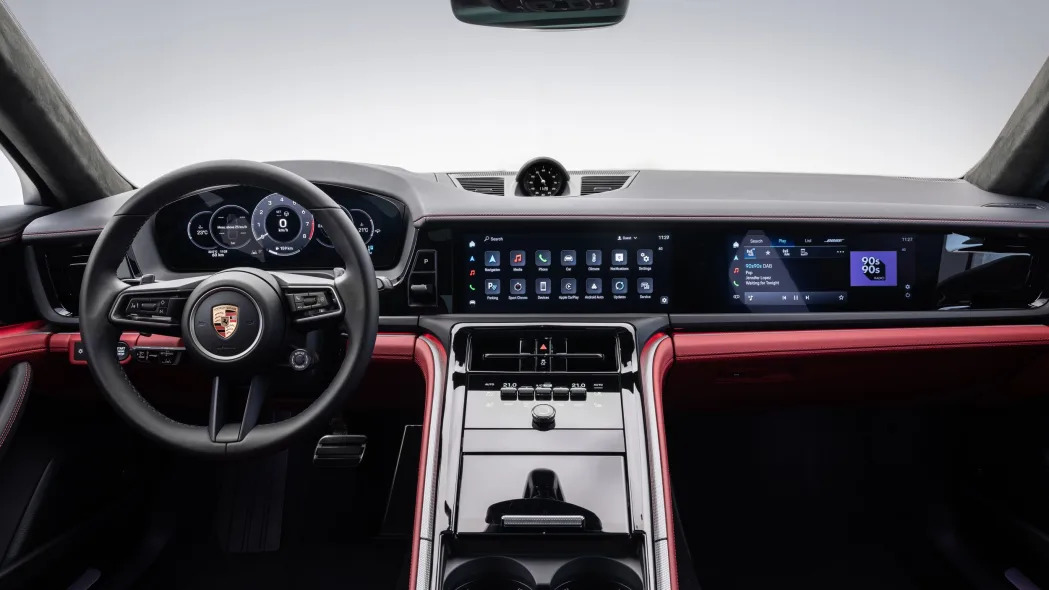








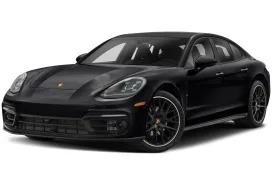
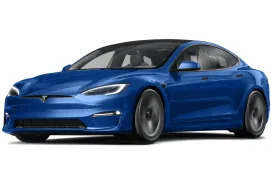

Sign in to post
Please sign in to leave a comment.
Continue